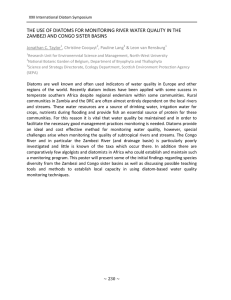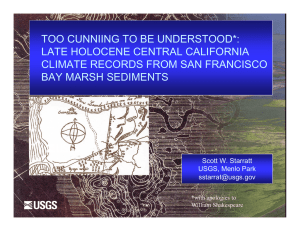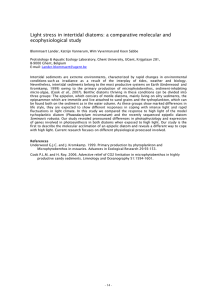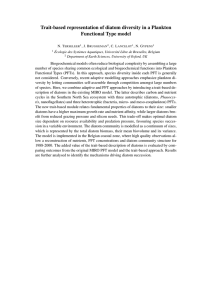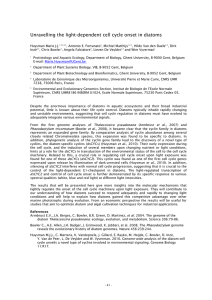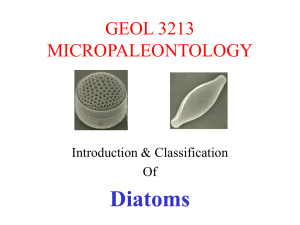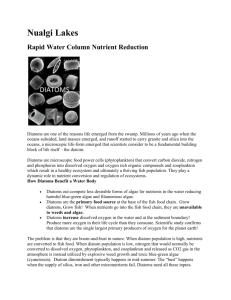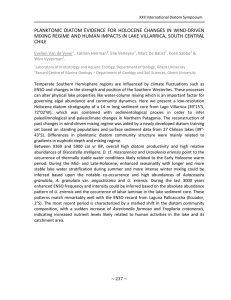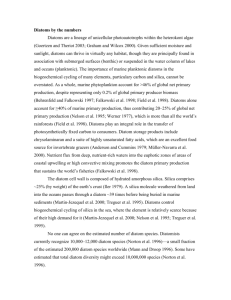downloadable
advertisement
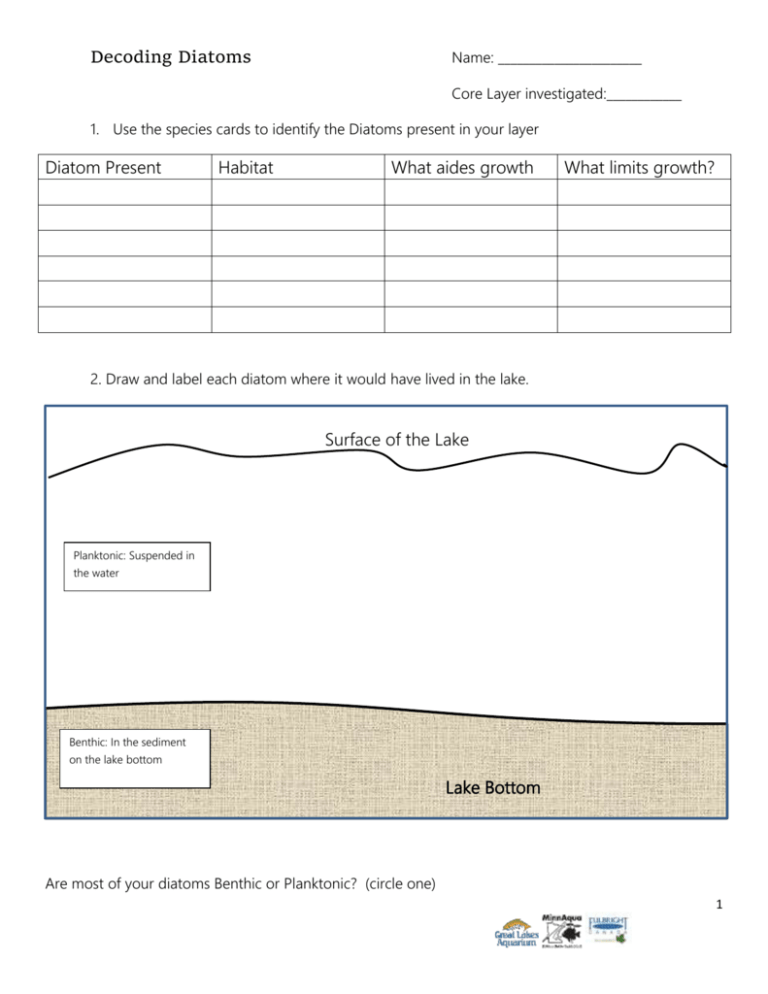
Name: _______________________ Decoding Diatoms Core Layer investigated:____________ 1. Use the species cards to identify the Diatoms present in your layer Diatom Present Habitat What aides growth What limits growth? 2. Draw and label each diatom where it would have lived in the lake. Surface of the Lake Planktonic: Suspended in the water Benthic: In the sediment on the lake bottom Lake Bottom Are most of your diatoms Benthic or Planktonic? (circle one) 1 3. Graph the quantity of each Diatom. Be sure to label the axis. Diatom Diversity 20 18 16 14 12 10 8 6 4 2 0 4. Think and respond Which species of diatoms has the great number of individuals present? What conditions are necessary to help them grow? Which species of diatoms has the fewest individuals present? What conditions prevent them from growing? 2 5. Compare and Conclude Lake George Diatom Research 1700-1850 Low Aulacoseira Many Raphids Benthic dominant (staurosira) Before human settlement Natural conditions of clear water, lots of benthic habitat of macrophytes and sand 1850-1900 Increase staurosira Deforestation, 1898 dam built – more sand (more habitat) Increased macrophytes (nutrients) Increase Aulacoseira, Cyclotella 1945 peak planktonic Low raphids Tannery (metal contaminants) 1973 – 1993 Aulacoseira No raphids Fragilaria crotonensis dominates More nutrients Eutrophication 1993-2011 Cyclotella increases Raphids increase Improved water quality – clearer water, less nutrients More benthic habitat, light Response to less nutrients inputs because of Clean Water Act in 1972 – important to realize that pollution in water takes a long, long time to clean up Increase raphids 1904 – 1973 Based on the types and quantity of diatoms you found, what time period does your section of the core represent? What large scale environmental changes were occurring at that time? How are diatoms useful to learning about a lake’s history? 3


